America’s Forrestal Class Aircraft Carrier
September 16th, 2023
10 minute read
The USS Gerald R. Ford (CVN-78), the lead vessel of a new class of United States Navy supercarriers, is the largest warship ever built in naval history. Though a bit behind schedule (not to mention over budget), the nuclear-powered vessel entered the fleet last year, replacing the decommissioned USS Enterprise (CVN-65), which ended her 61 years of active service in December 2012.
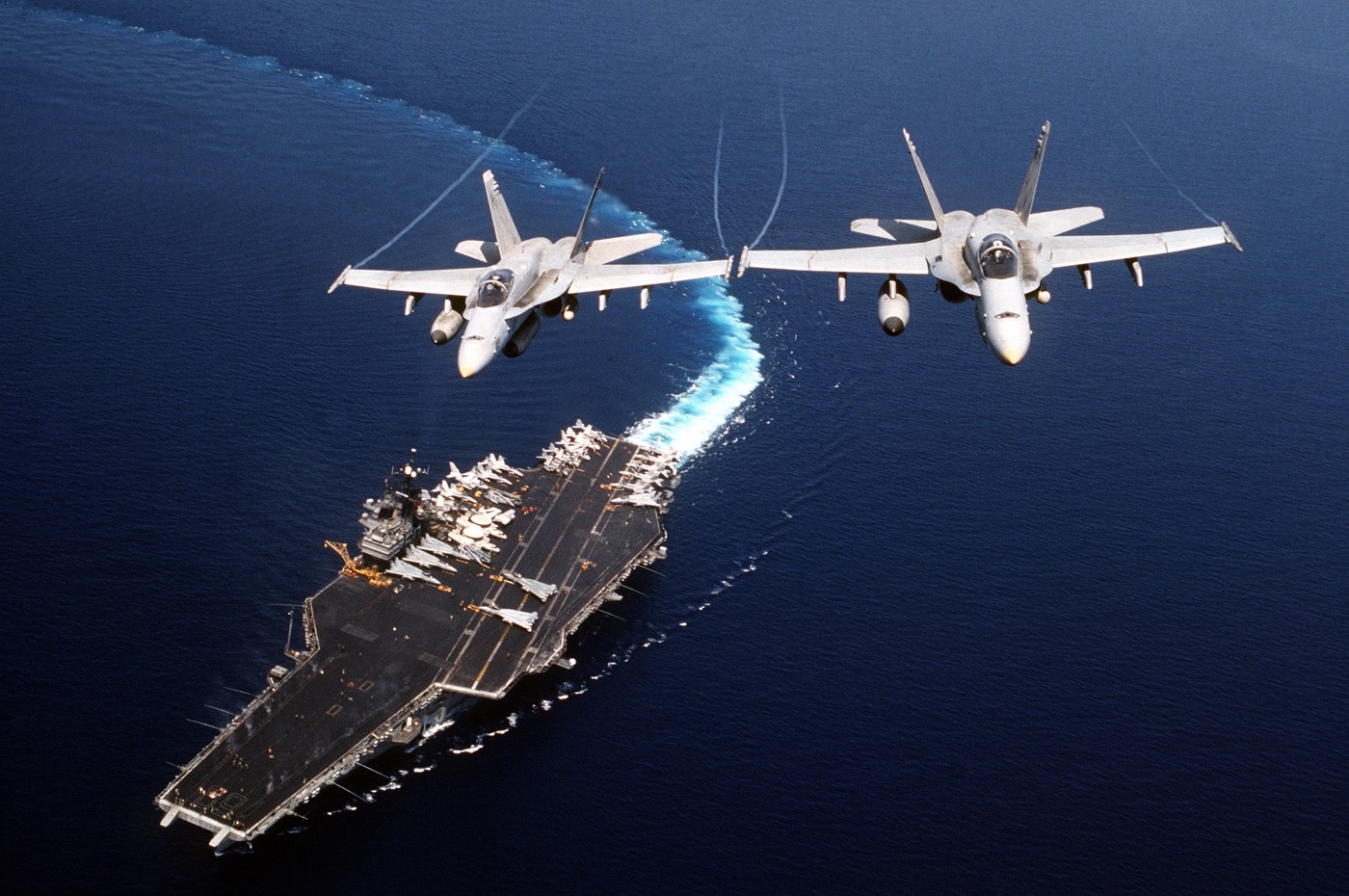
While the Ford-class will eventually replace the aging Nimitz-class aircraft carriers on a one-for-one basis over the coming decades, neither were the original supercarriers to see service with the U.S. Navy. That designation actually goes to the four ships of the conventionally powered Forrestal-class (while all following supercarriers were nuclear powered), which helped usher in the unprecedented naval dominance and air power the United States Navy has maintained since the Second World War.
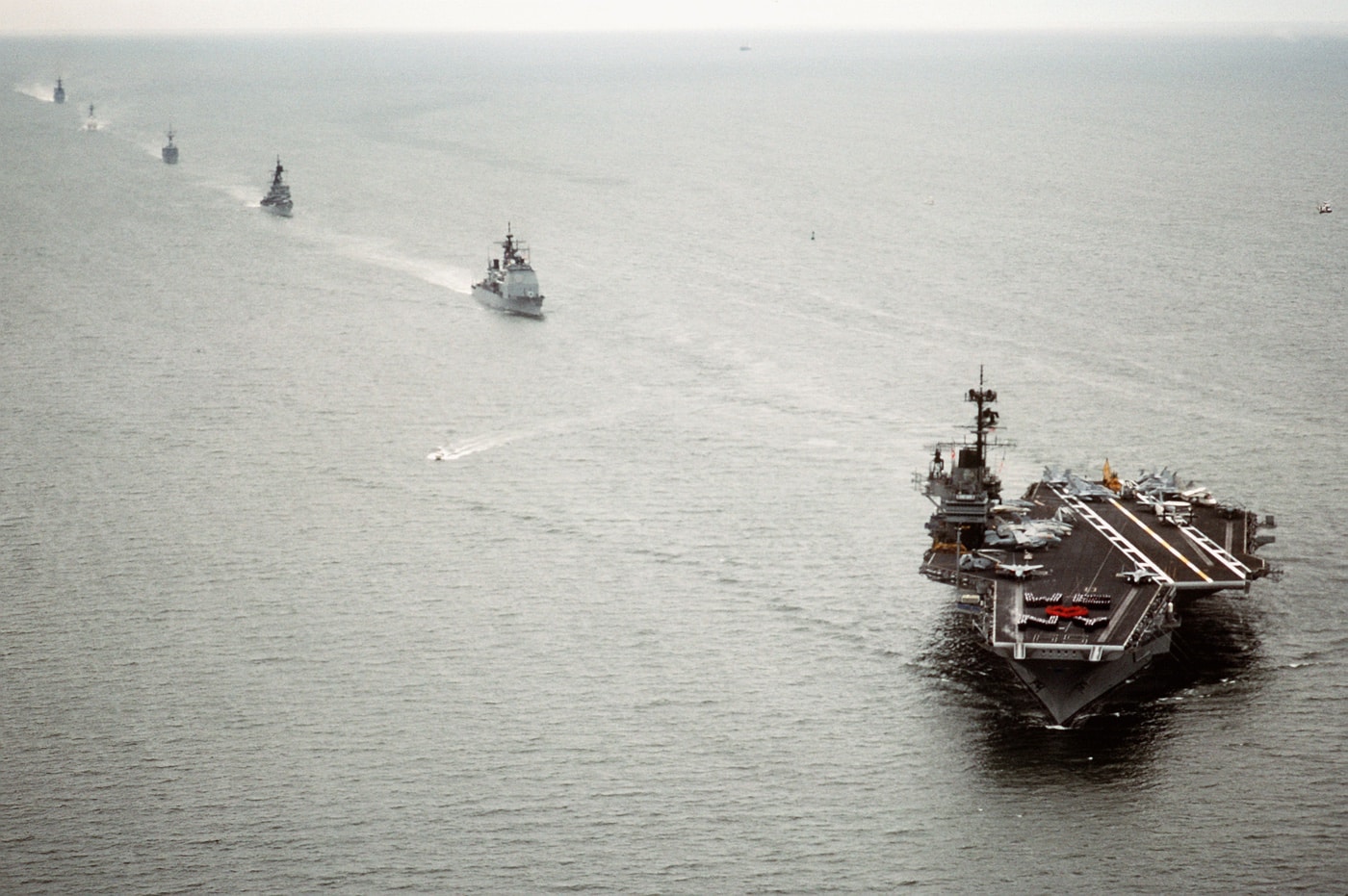
These carriers could project U.S. power practically anywhere globally — serving as floating airbases. Moreover, many of the design elements seen with the nuclear-powered carriers of today were first employed on the Cold War-era vessels that entered service in the mid-1950s.
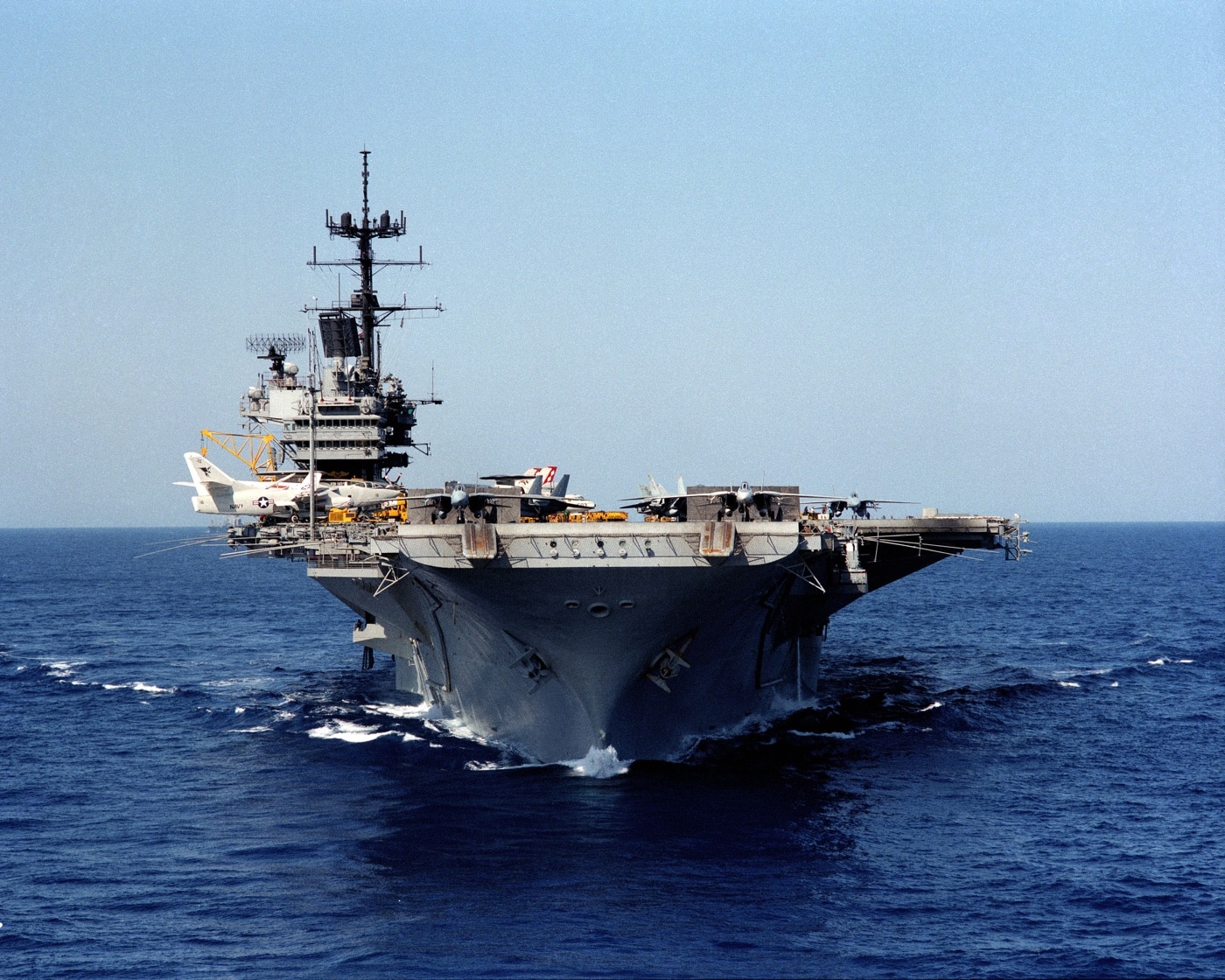
In addition to their massive size, which surpassed the massive World War II Japanese aircraft carrier Shinano — which was converted from the third gigantic Yamato-class battleship hull — the Forrestal-class featured deck-edge elevators and an angled flight deck. Though older U.S. Navy carriers eventually incorporated those features during refits, the Forrestal-class was designed with them from the ground up.
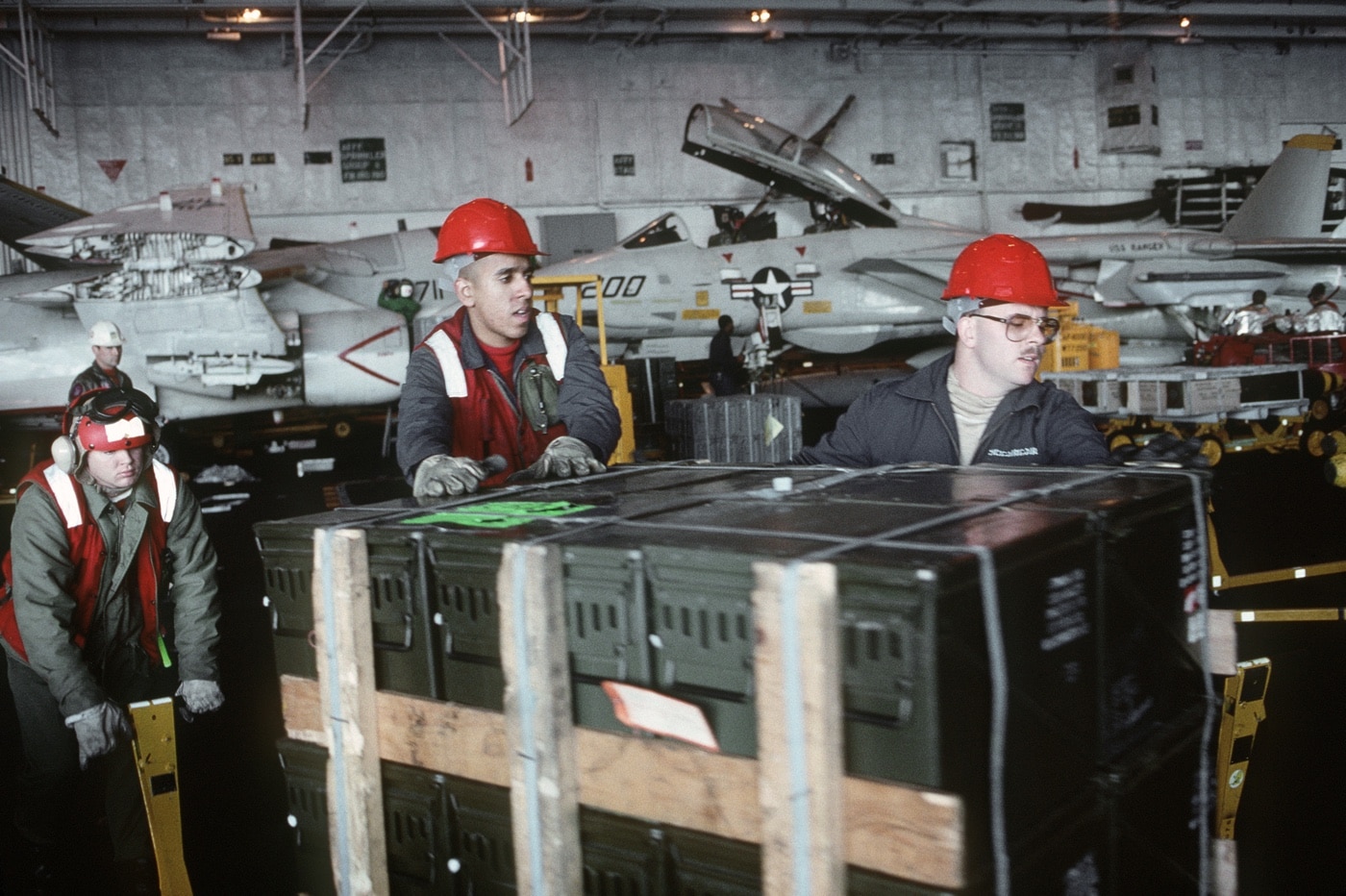
This new class of warship was thus a true leap forward, and while they arrived too late to see service in the Korean War, the four Forrestal-class aircraft carriers played a vital role throughout the Cold War.
What About the United States-Class?
Though the Forrestal-class is now closely associated with the Cold War era, its development actually began during the Second World War. The United States Navy admiralty was already looking beyond the Midway-class that only entered service just as the hostilities ended. In addition to seeing the need for an armored flight deck for added survivability, the admiralty also determined that the next class of carriers would need to be far larger, and, more importantly, able to accommodate larger jet aircraft.
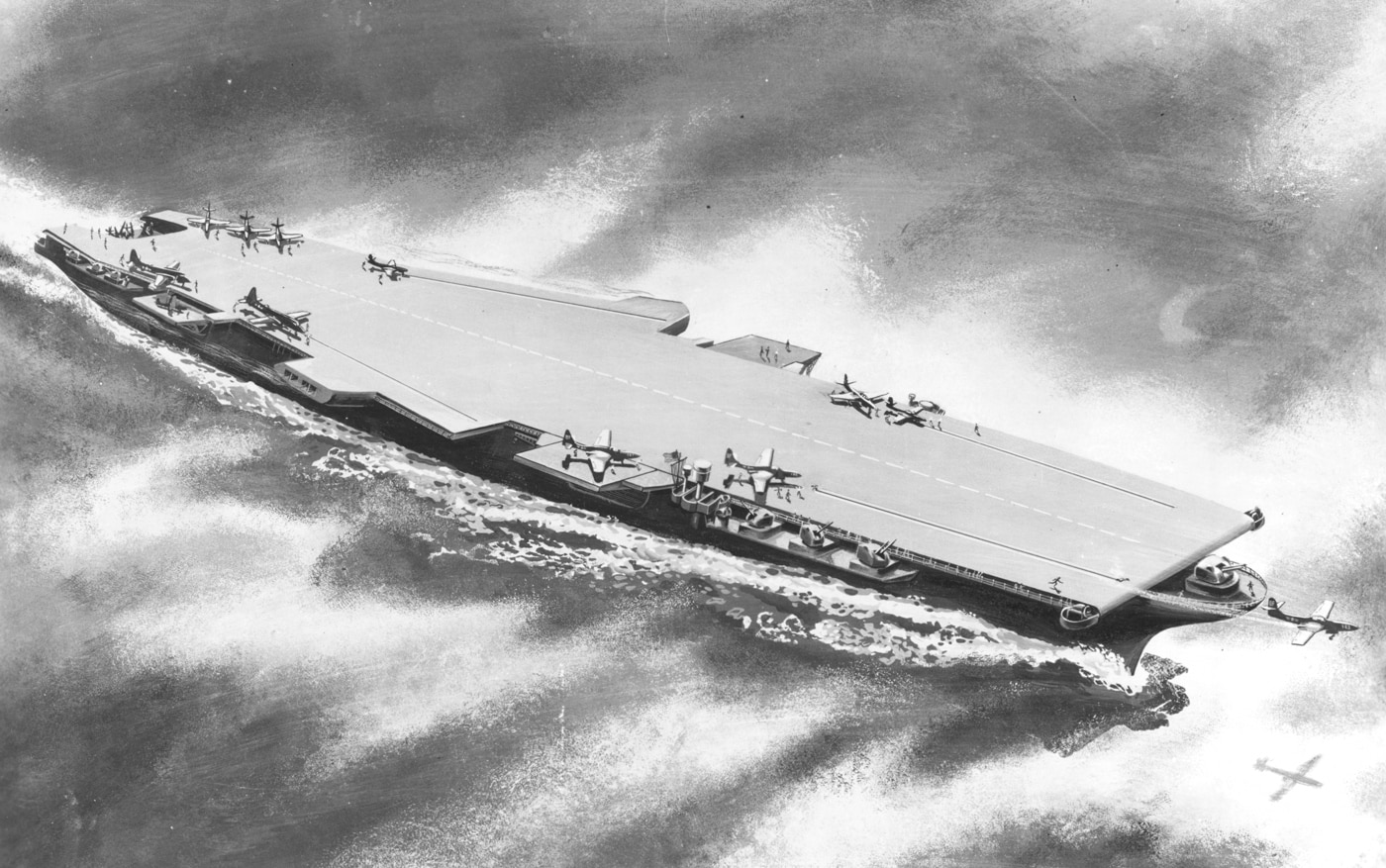
In July 1948, President Harry S. Truman approved the construction of five supercarriers — vessels that could project U.S. power worldwide. Funding was to be provided in the Naval Appropriations Act of 1949, and this led to what was designated the USS United States (CVA-58), which was to be the lead ship of a new class of post-World War II flattops.
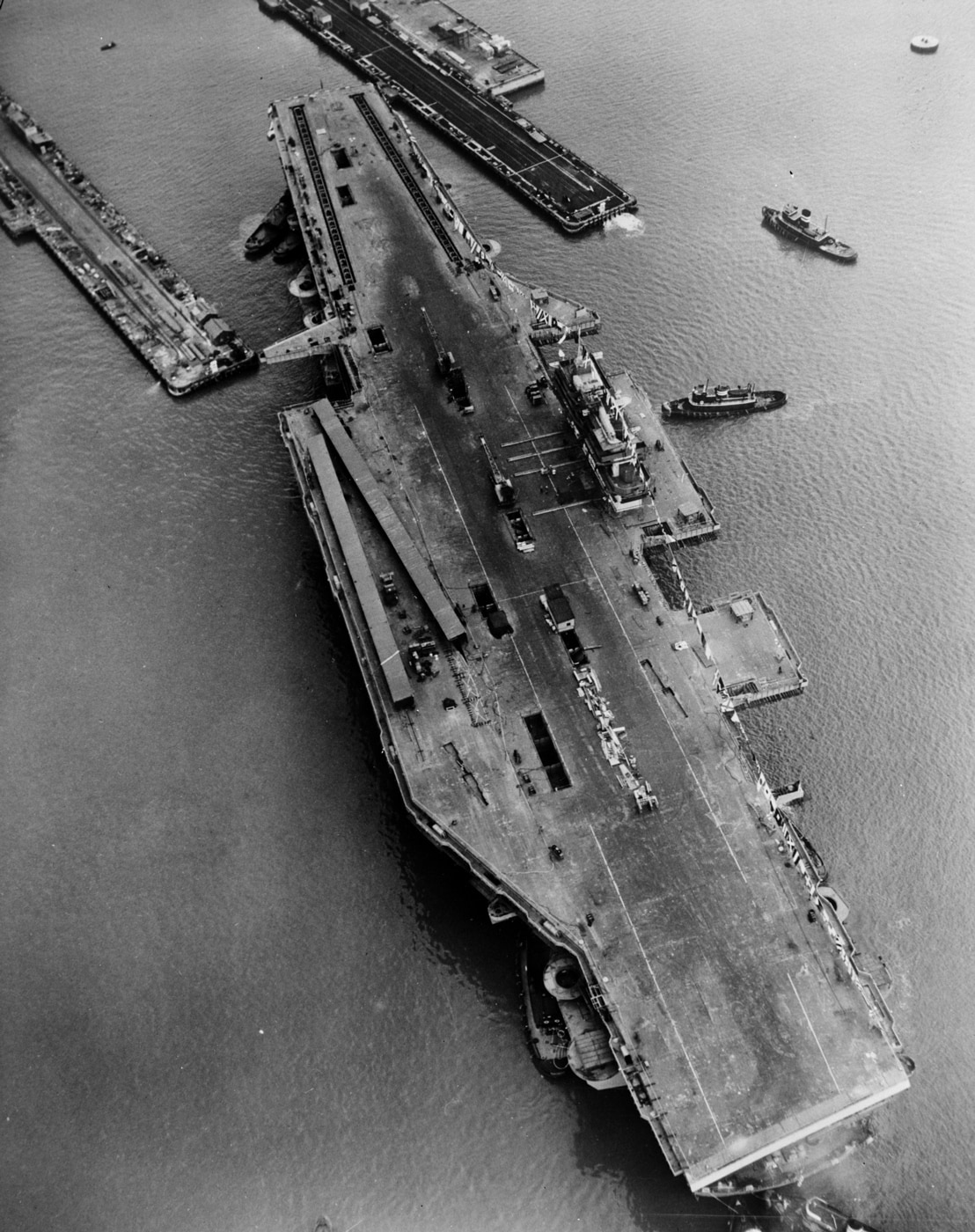
As initially envisioned, it was quite a radical departure from the aircraft carriers built during the Second World War — notably the way it even evoked the “streamlined modern” of the Art Deco architecture and design movement that was commonly seen with post-war automobiles and aircraft. It might have been a handsome warship, but whether it would have been practical has been questioned for decades.
Most notably, the proposed 65,000-ton carrier (83,000 tons fully loaded) was designed with a flush-deck without an island. Though considered almost revolutionary by today’s standards, it should be noted that the USS Langley (CV-1) — a converted collier and the US Navy’s first aircraft carrier — featured a flush-deck, but that was because the flight deck was literally built on top of the vessel.
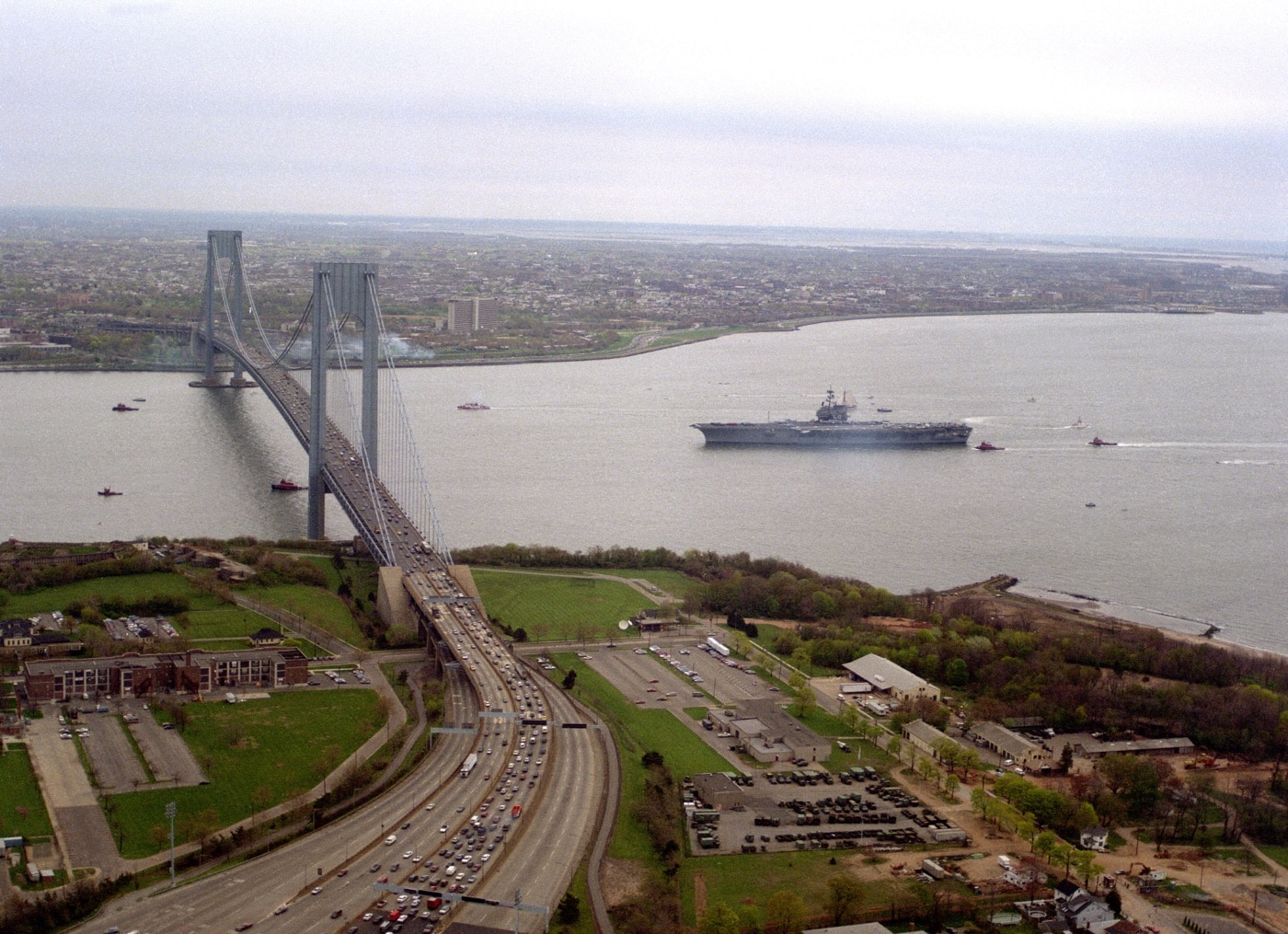
In addition, the Imperial Japanese Navy’s Ryūjō was a flush-decked carrier without an island superstructure. Its navigating and control bridge was located just under the forward lip of the flight deck in a long glassed-in “greenhouse.” However, Ryūjō proved to be top-heavy — and the issue was never fully addressed.
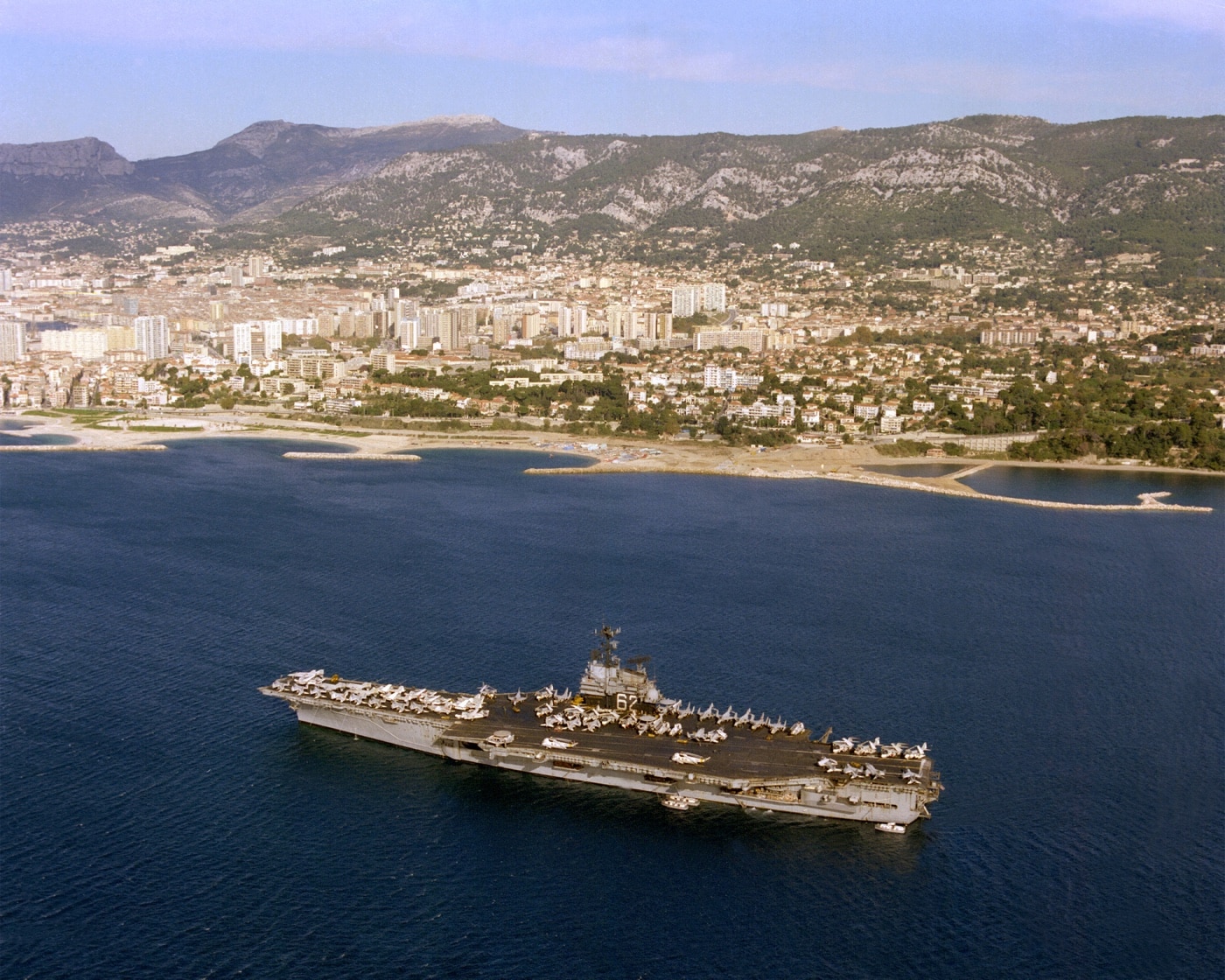
In the case of CVA-58, the flush-deck was to allow for the launch and recovery of large aircraft of 100,000 pounds — in other words, bombers that could carry nuclear weapons. However, that fact was also what scuttled the program just as it was getting started. There was inter-service rivalry between the U.S. Navy and U.S. Air Force, and nuclear bombers were something the latter wasn’t willing to share. The USS United States was canceled just as the first plates were laid down in 1949. It also resulted in the U.S. Navy opting for a more conventional design.
The Forrestal-class Takes Shape
The development of the Forrestal, the U.S. Navy’s first supercarrier, incorporated many lessons from the Korean War, and this resulted in significant improvements over previous carrier designs. This included a broader flight deck, while the size was increased by some 25 percent.
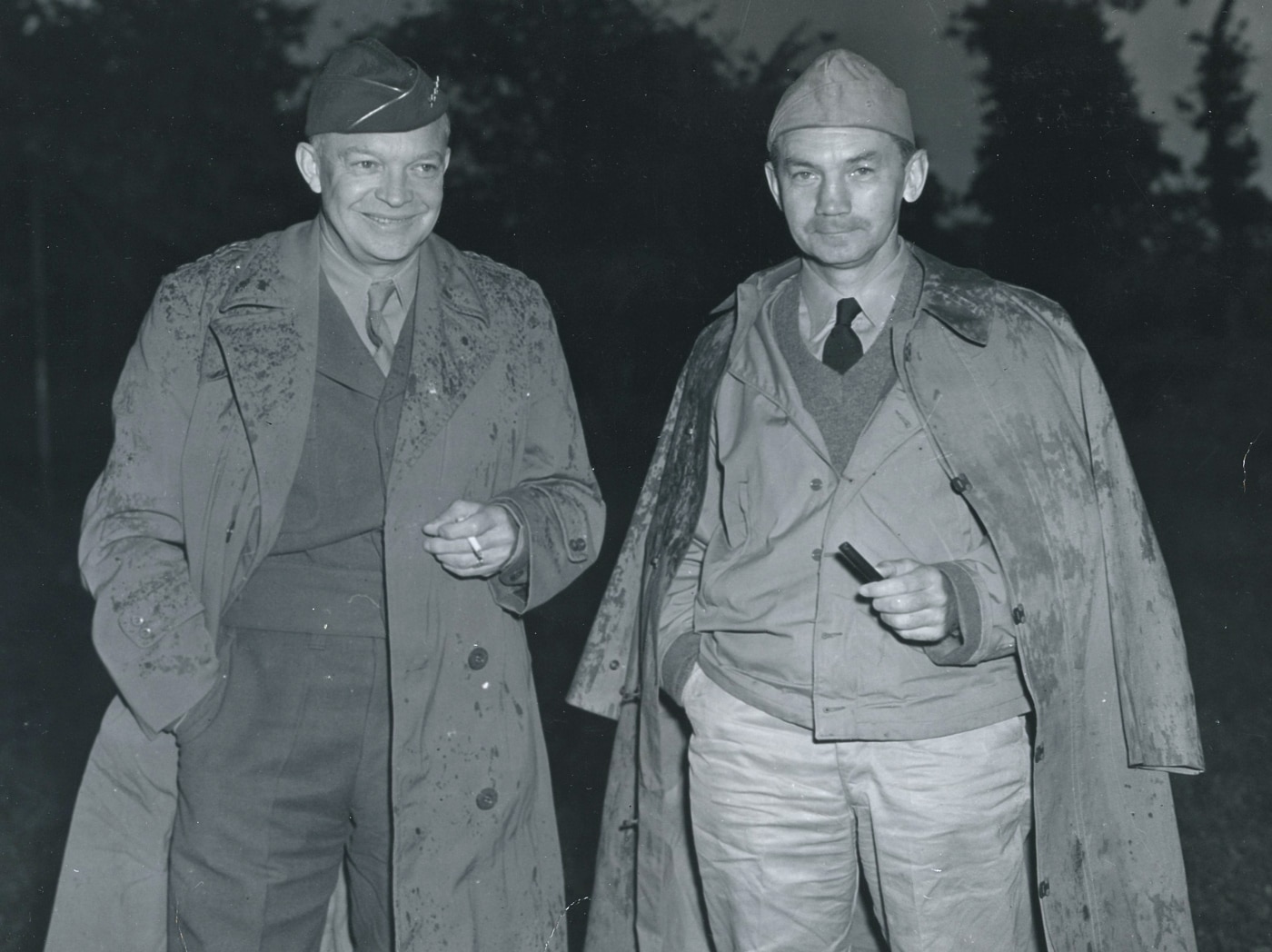
Instead of a flush deck, the new class of supercarriers was originally to have a retractable island — but that proved impractical. In fact, it is almost impossible today to consider how it could have been successfully accomplished. In the end, the supercarriers featured a taller and larger island.
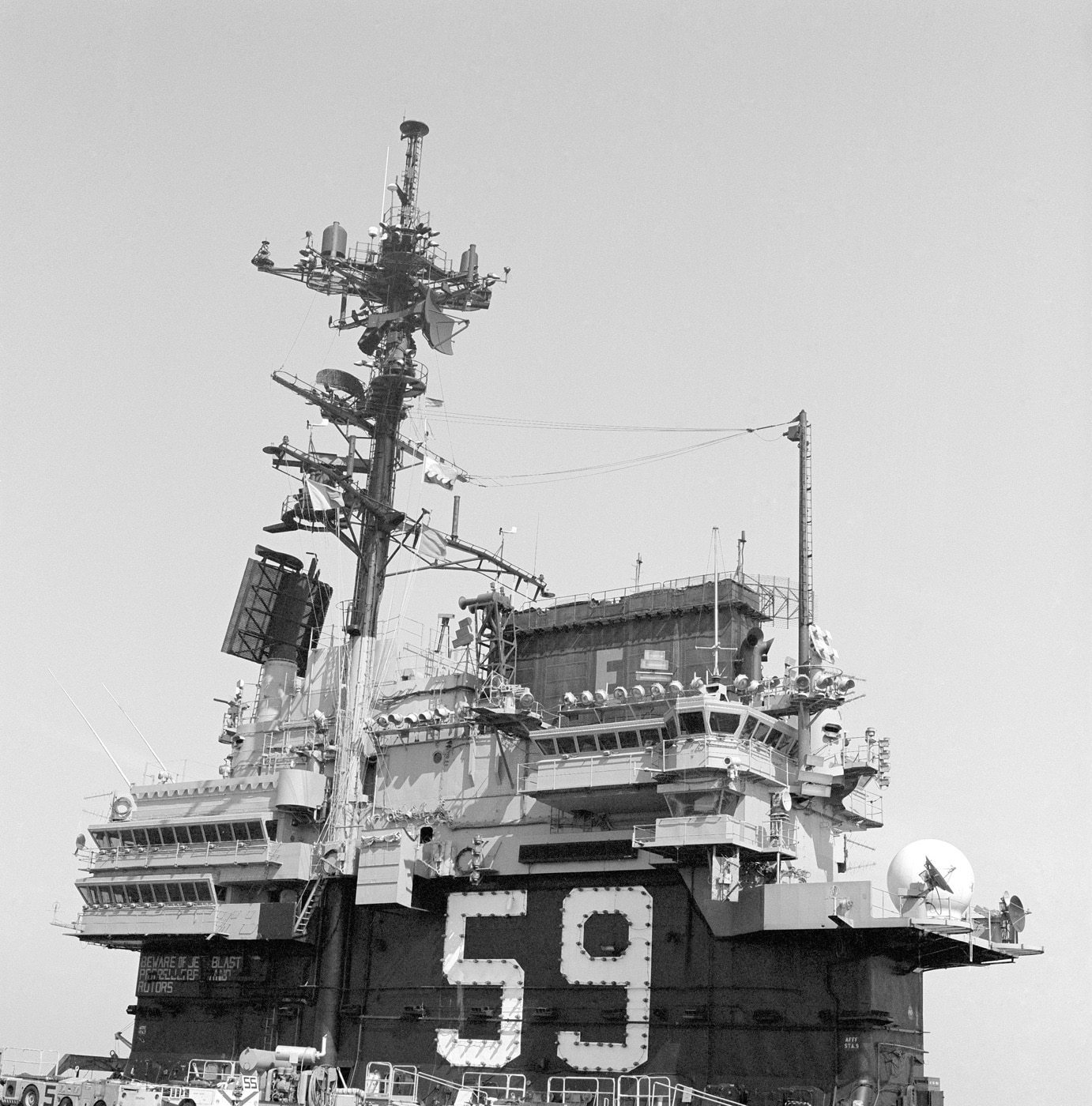
This actually accommodated a triple bridge with enclosed full-size posts for the CO, XO and wing command, as well as an admiralty bridge and open bridge on top. The island further supported large aerials and antennae for all-around long-range air and sea surveillance, completed by its own air group.
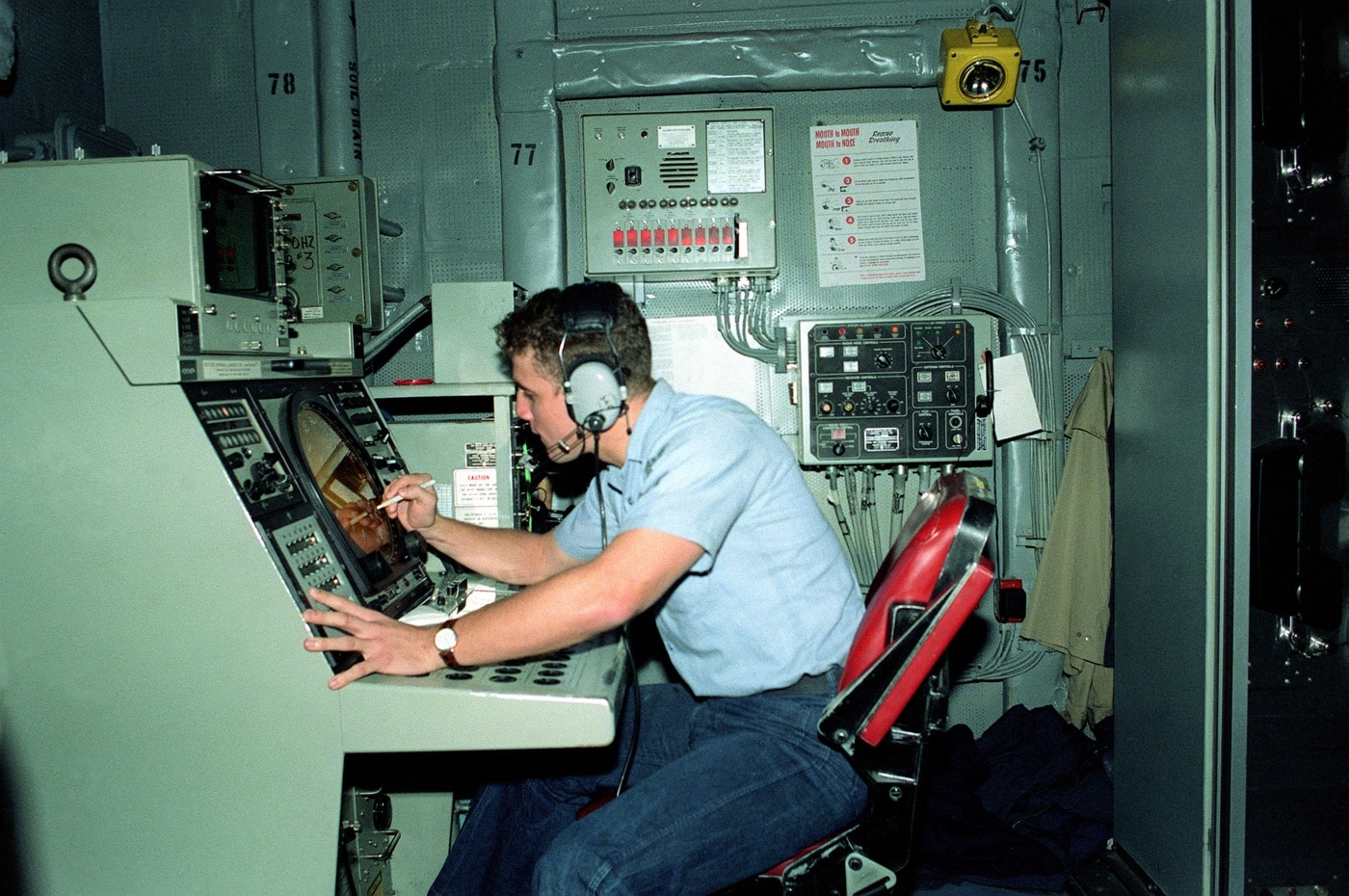
As the Forrestal-class carriers were also the first designed specifically to operate jet aircraft, another revolutionary design was employed — namely its angled flight deck, which permitted simultaneous takeoffs and landings. To some U.S. Navy officials, this was seen as a radical compromise, but in addition to allowing for the much larger island, it provided unprecedented flexibility during air operations — or almost.
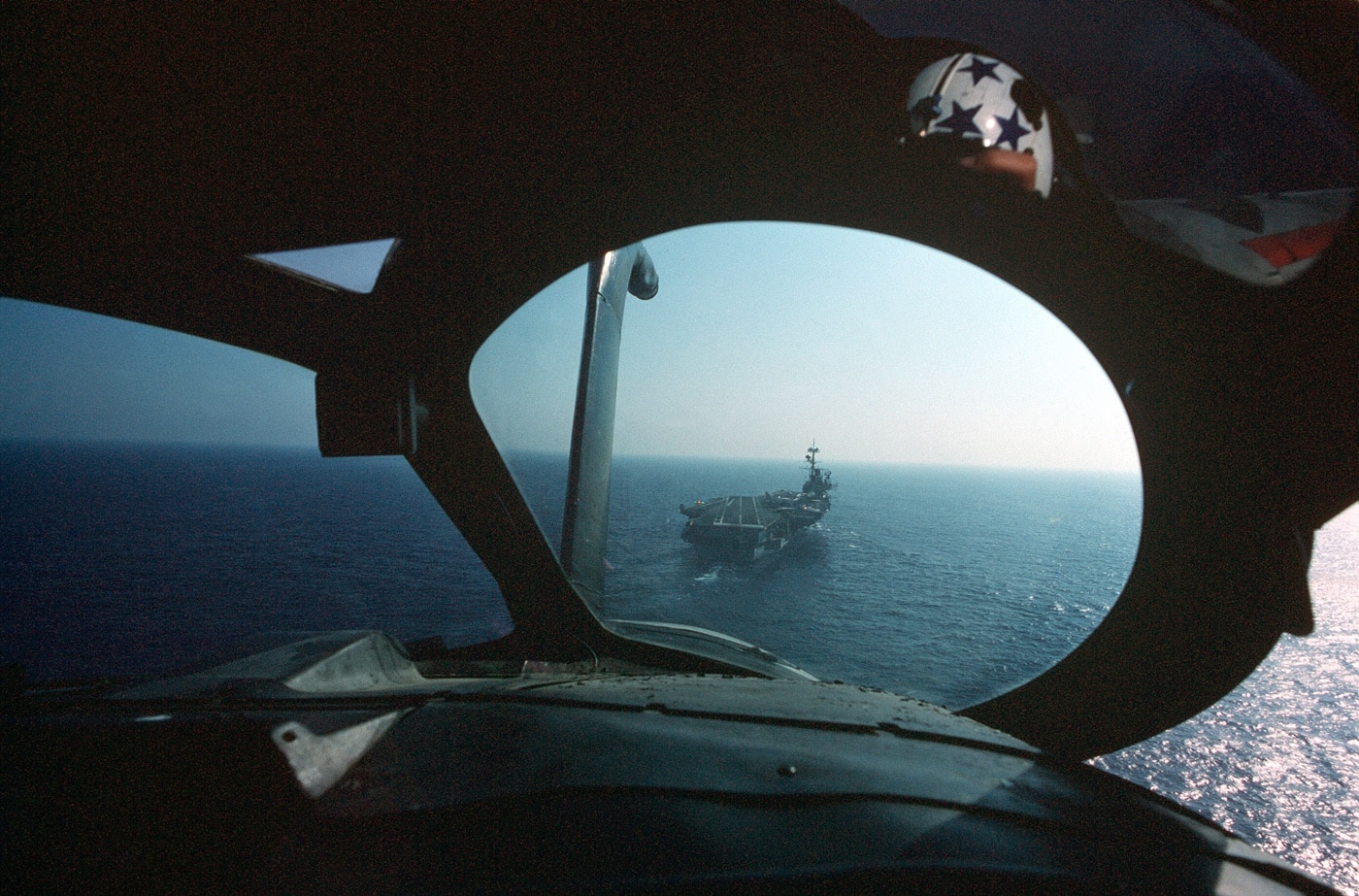
The first two vessels of the class, USS Forrestal and USS Saratoga (CVA-60) were actually laid down as axial deck carriers but converted during construction — while the subsequent USS Ranger (CVA-61) and USS Independence (CVA-62) were laid down as angled deck aircraft carriers. More importantly, angled flight decks became the basis for all U.S. aircraft carriers to follow, while many World War II carriers were subsequently converted to the new design. In addition, other nations also began to see the merits of such a flight deck layout.
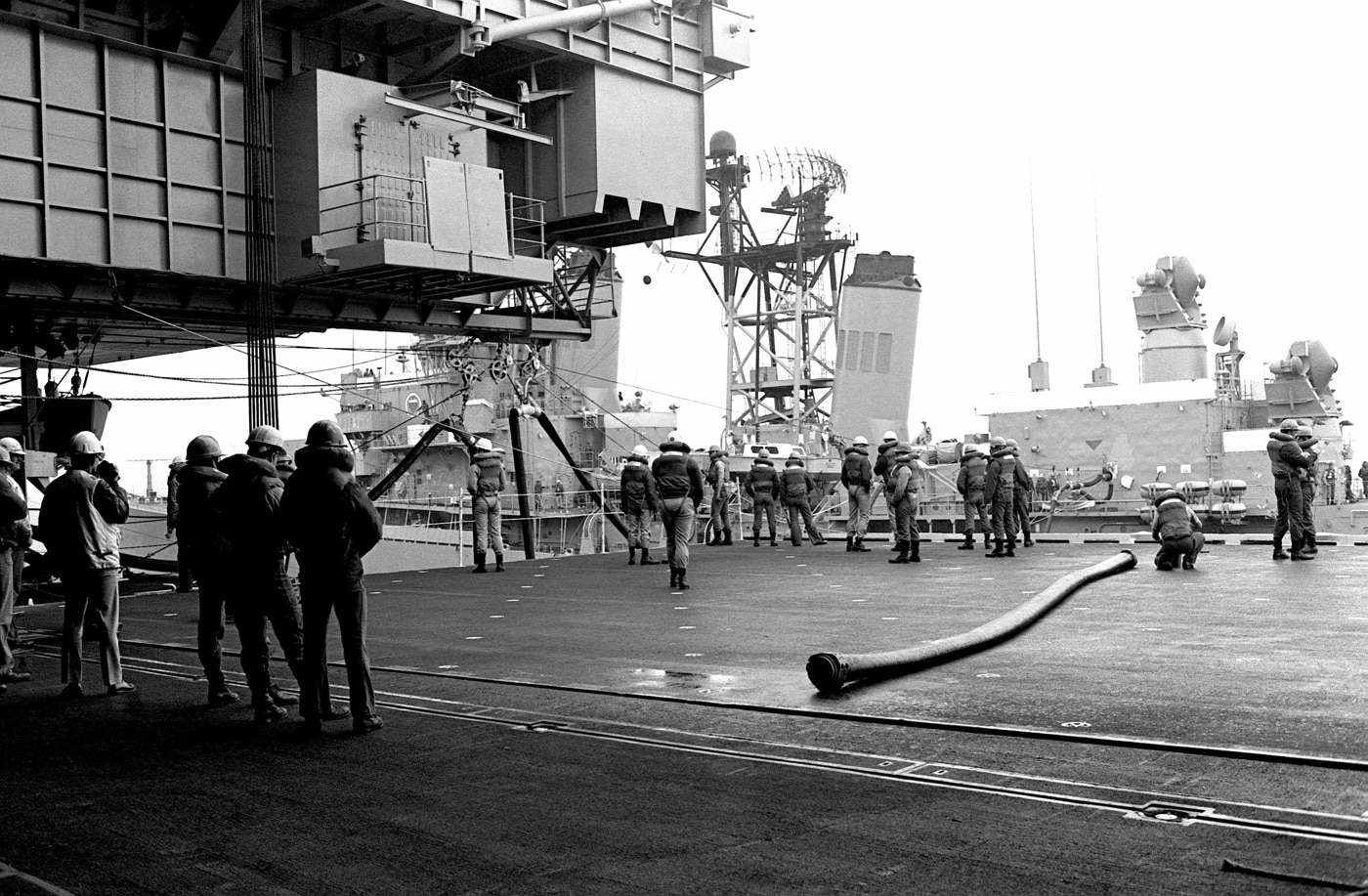
Not all of the elements employed with the Forrestal-class proved to be entirely perfected, however.
Most notably this was the positioning of the elevators, which were determined to be badly arranged for aircraft handling — notably due to the location of the portside elevator. Located at the fore end of the angled deck, it was in the path of the launch path of aircraft from the number three and the number four catapults, as well as the landing path.
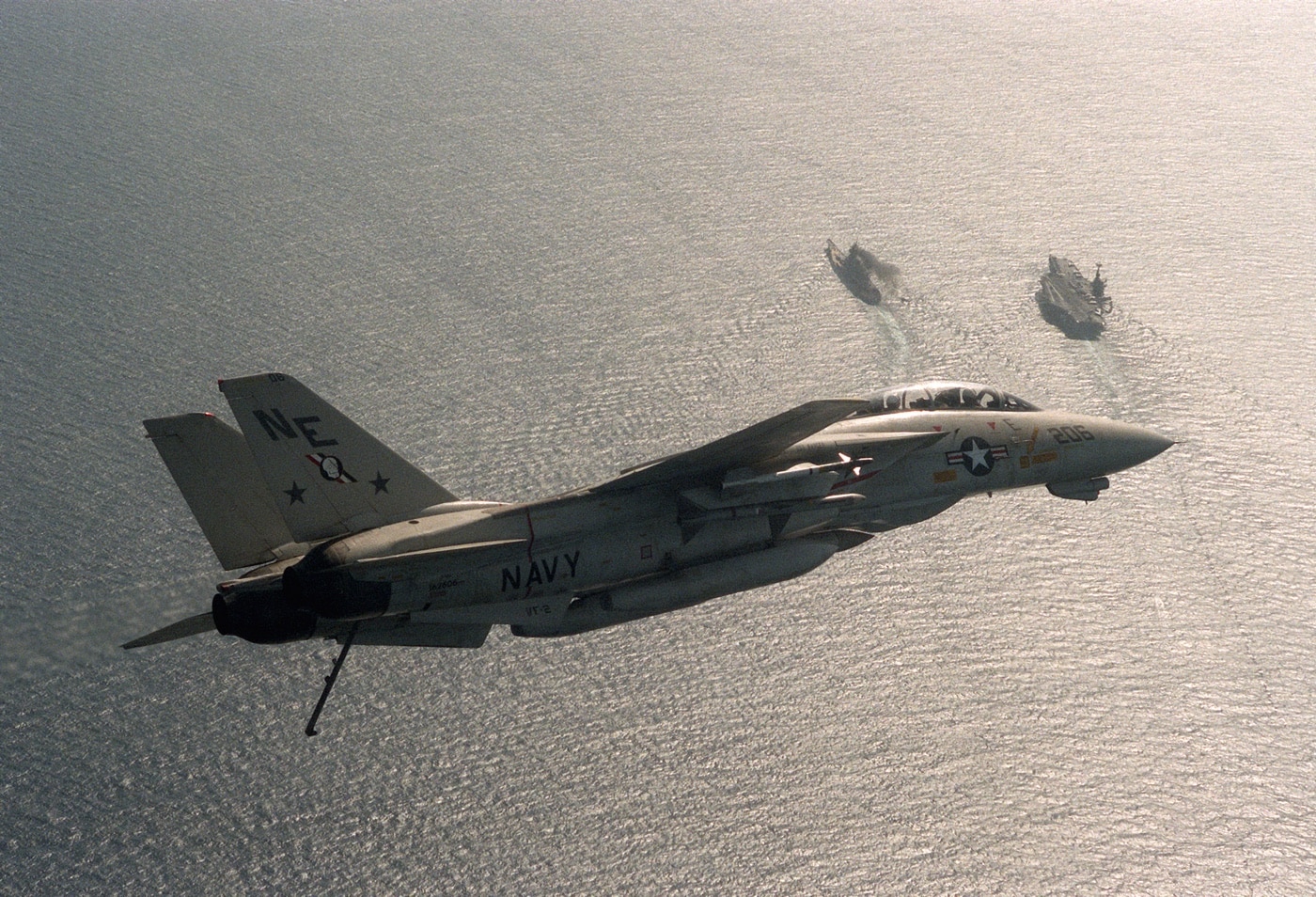
The flight deck also utilized a different layout than the later aircraft carriers, with the island placed closer to the bow. It is simply a fact that the Nimitz-class and Gerald R. Ford-class designs benefitted from the lessons learned with the Forrestal-class supercarriers.
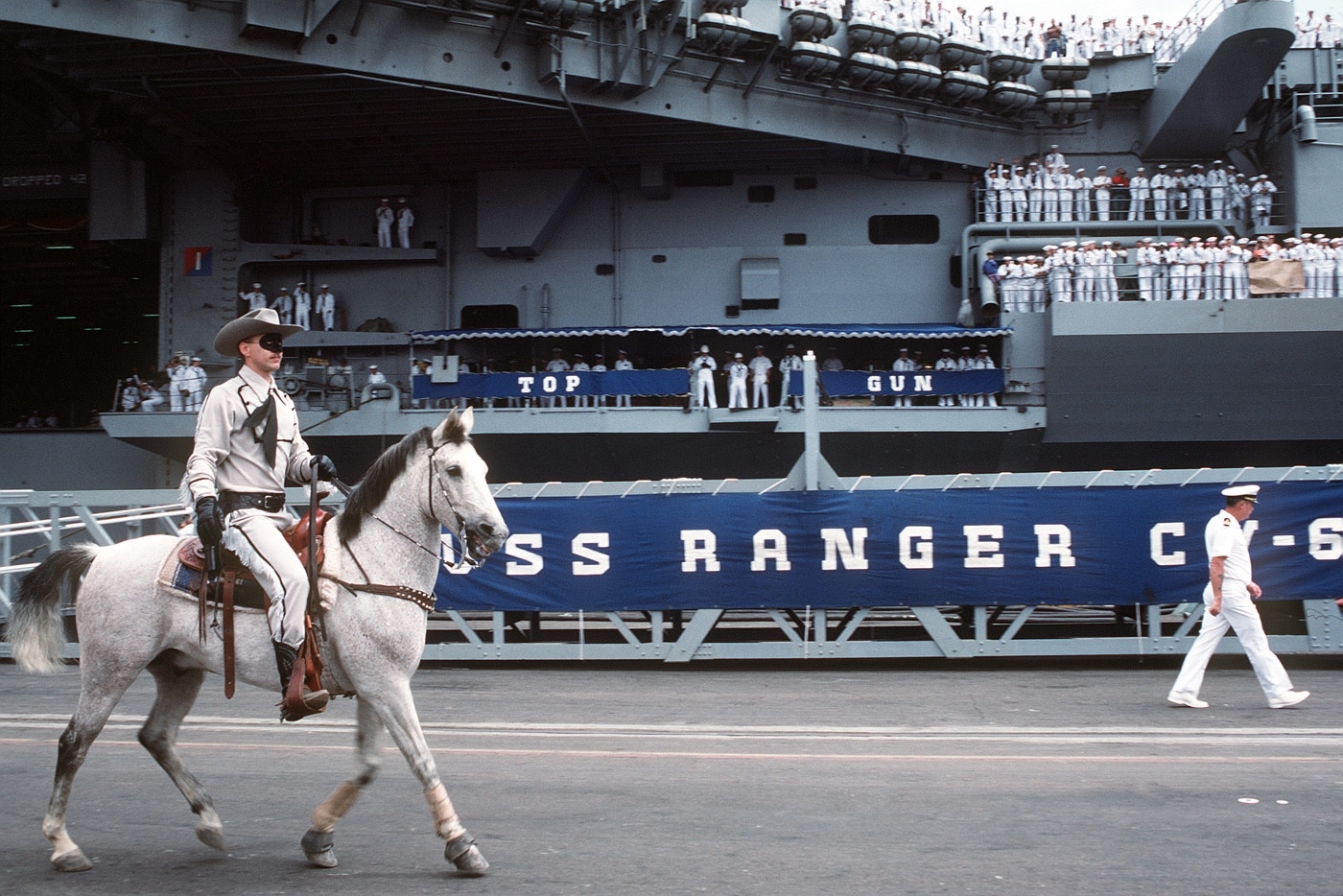
The United States Navy had originally planned for eight ships of the Forrestal class, but as improvements in the original Forrestal design were incorporated into the last four to be built, those were designated as the separate Kitty Hawk class.
The USS Forrestal In Service
Commissioned on October 1, 1955, at Newport News, Virginia, as the U.S. Navy’s first supercarrier, CVA-59 — “attack aircraft carrier” and later just redesignated as CV-59 — the flattop initially operated in the Atlantic and the Mediterranean, and provided support during the Lebanon crisis in 1958.
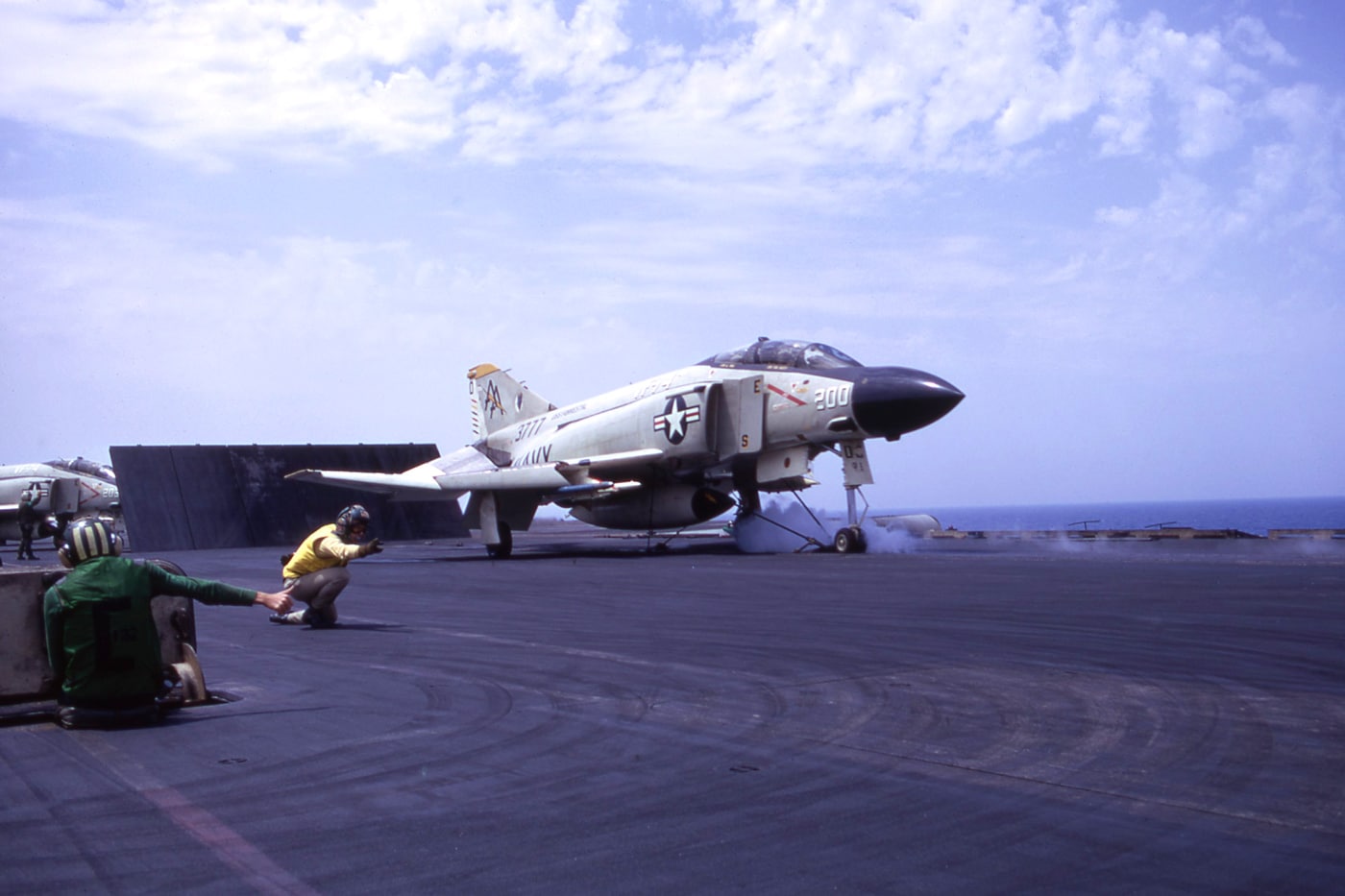
USS Forrestal subsequently was deployed numerous times to the Mediterranean until 1966 when she received an overhaul. She was ordered to the Pacific during the Vietnam War to provide additional airpower, and it was on July 29, 1967, that tragedy struck when she suffered a huge fire on her flight deck, resulting in the loss of more than 130 men and numerous aircraft.
Due to the accident, the U.S. Navy learned fire-fighting lessons that are now in practice today.
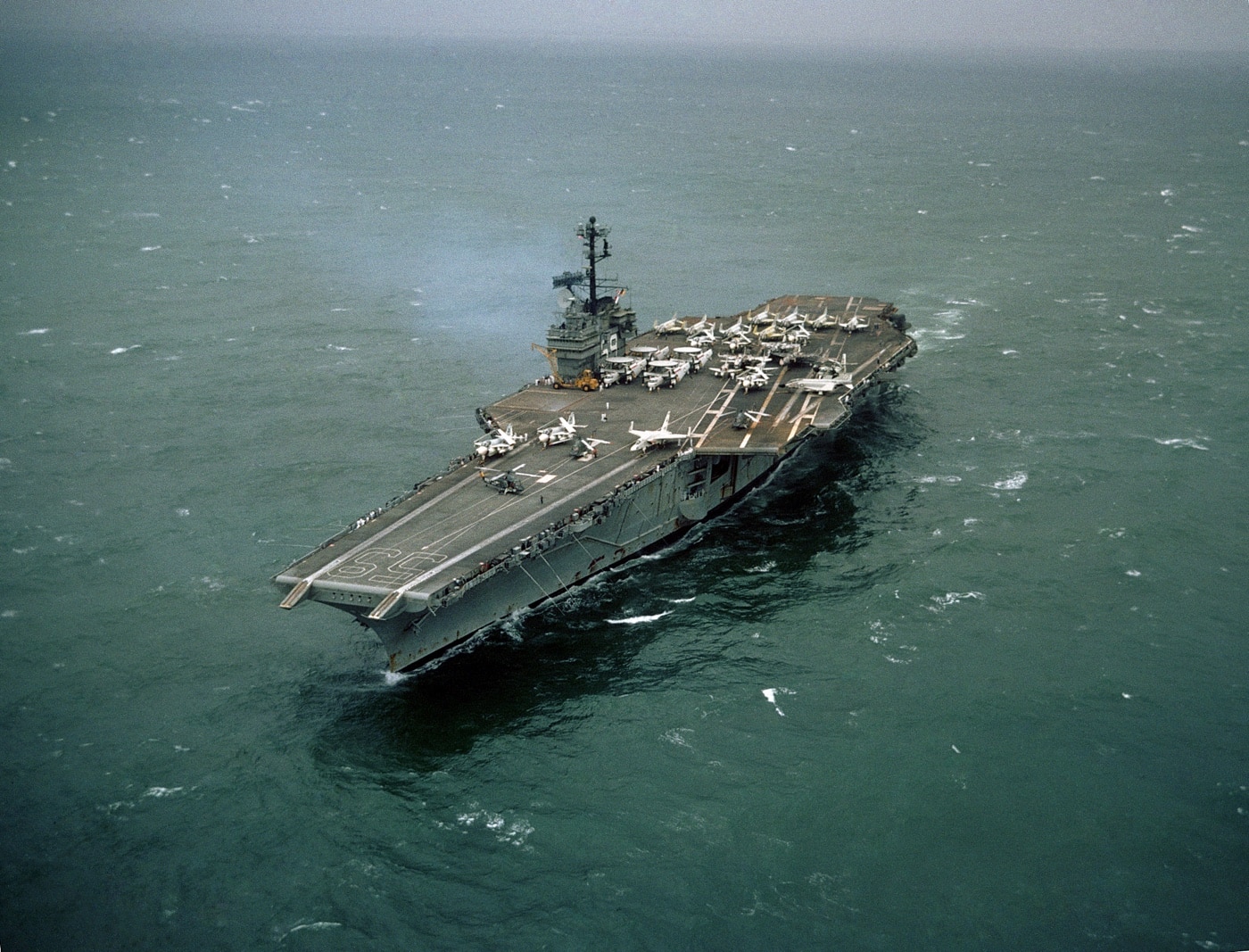
The original U.S. Navy supercarrier was repaired in 1968 and returned to the Mediterranean for multiple deployments over the next seven years. Reclassified as CV-59 in 1975, USS Forrestal served as the host ship for the United States Bicentennial celebrations in July 1976 in New York City.
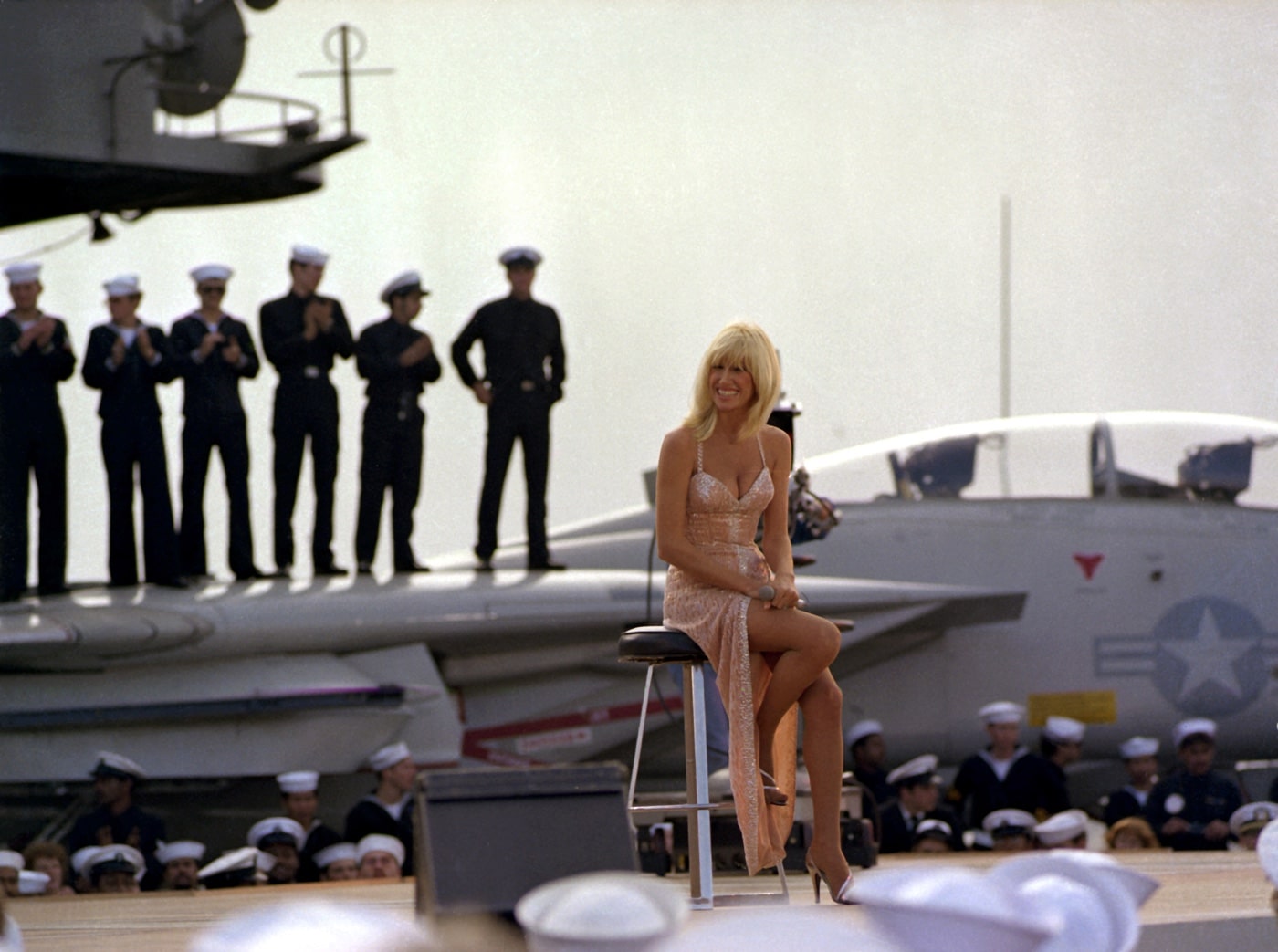
USS Forrestal then played a major role in confronting Libyan aggression in March 1981, and the vessel received a Service Life Extension Program (SLEP) upgrade from 1983-85. In the late 1980s, she participated in Operation Earnest Will protecting merchant tankers in the Middle East region and was on standby in the Atlantic Ocean during the 1991 Persian Gulf War. After providing air support during Operation Provide Comfort, which provided assistance to the Iraqi Kurds in 1991, she became a training carrier and was redesignated AVT-59.
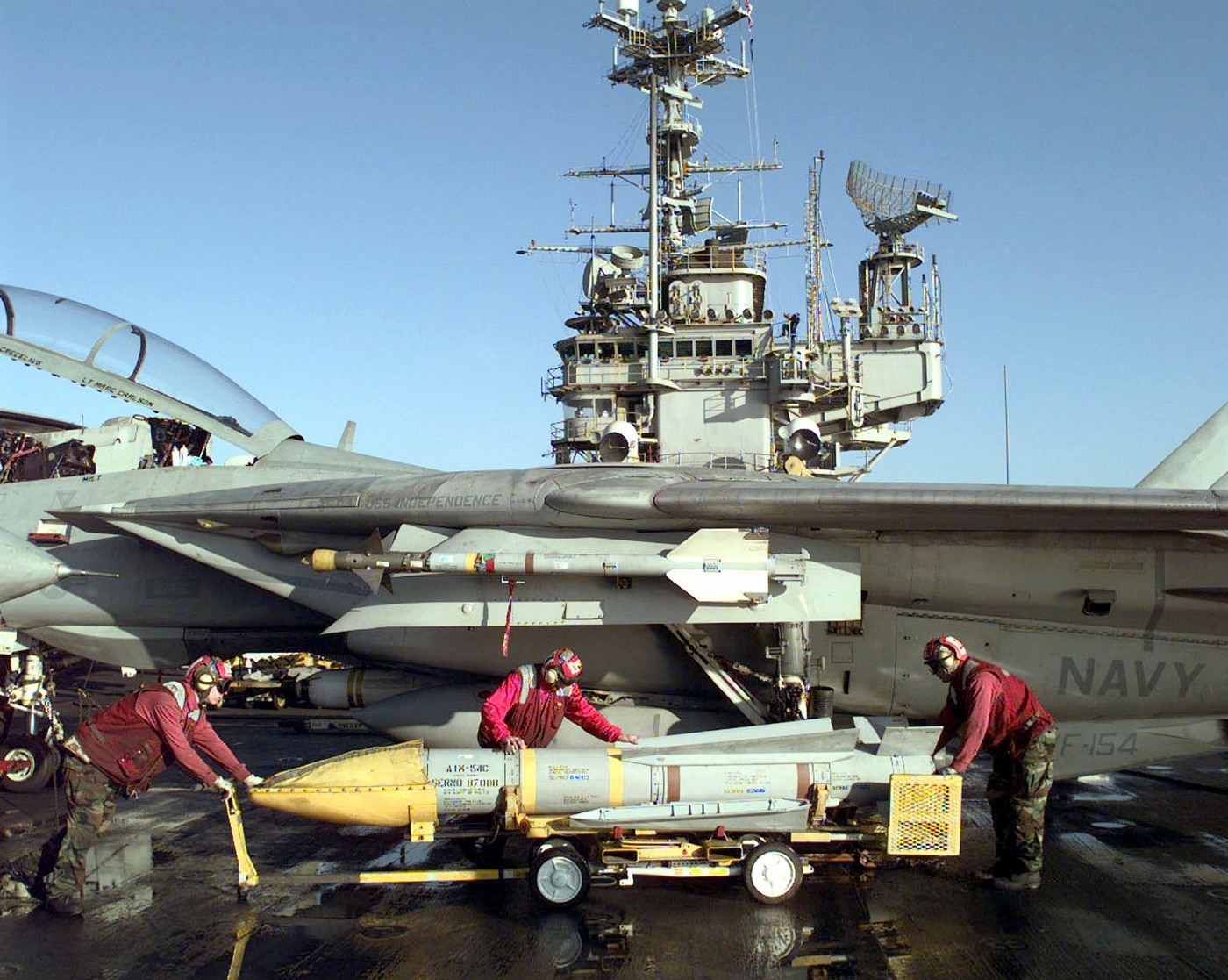
USS Forrestal was decommissioned in September 1993 after nearly four decades in service. Efforts to preserve the vessel as a museum ship proved unsuccessful, and sadly she was broken up in Brownsville, Texas, with the work being completed in December 2015.
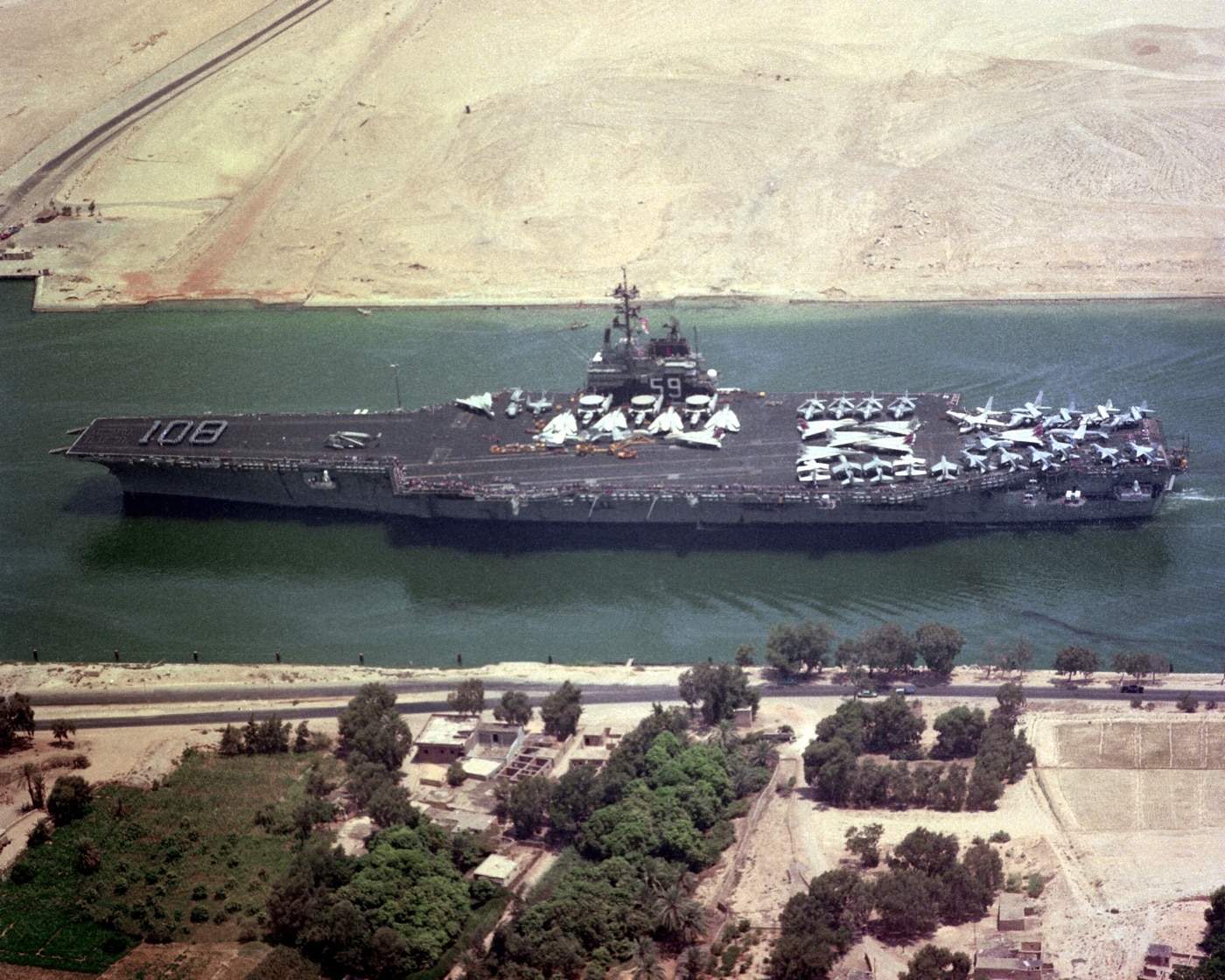
However, she was heavily stripped to support the rest of the carrier fleet, with her four bronze propellers installed on the Nimitz-class carrier USS Harry S. Truman (CVN-75), while her 30-ton anchors are now on the USS John C. Stennis (CVN-74).
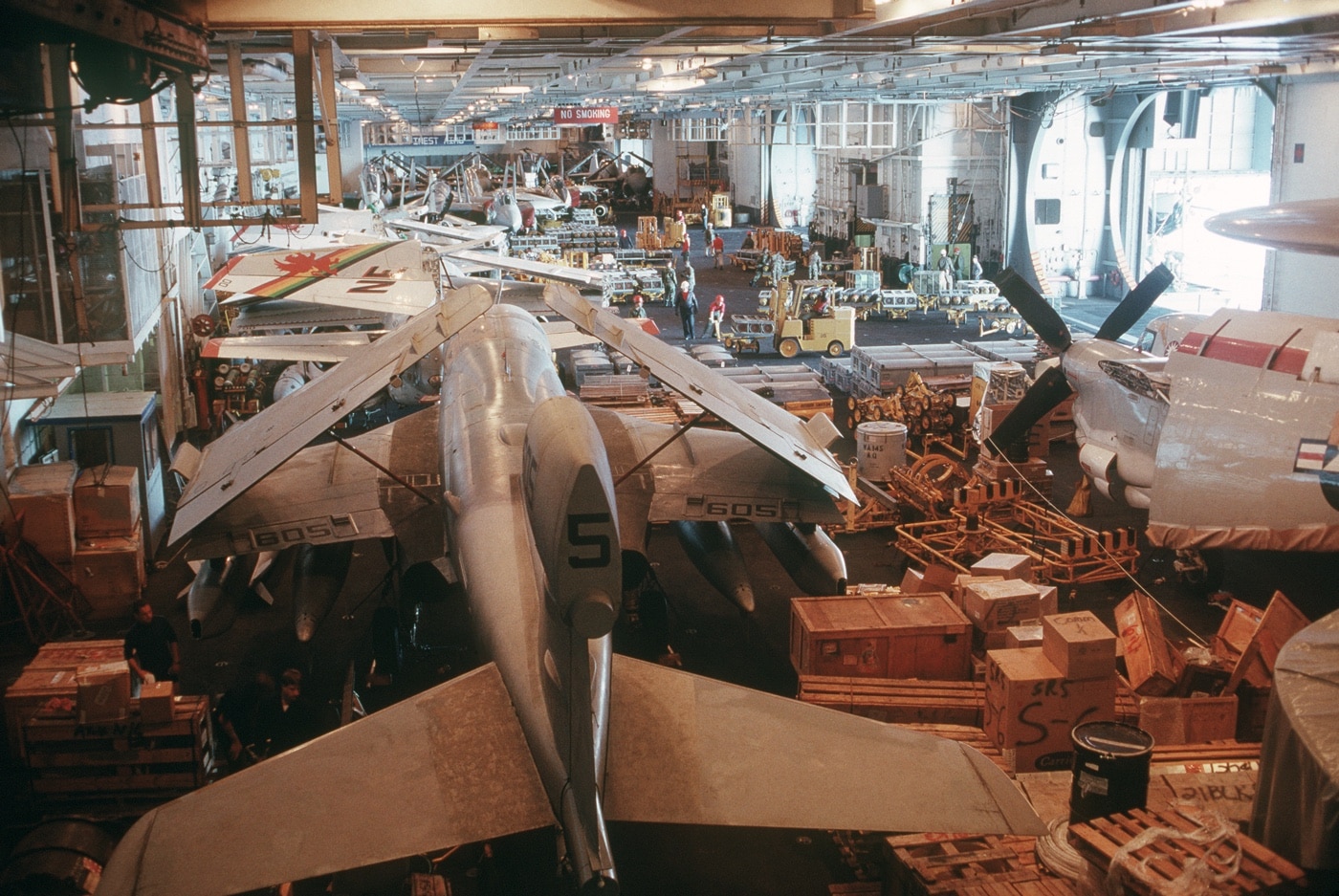
There were also plans to sink the ship as an artificial reef, but at issue was that many design elements of the Forrestal-class led directly to current supercarriers — and there were fears that divers could learn too much about the Navy’s vessels. That fact also contributed to why none of her sister vessels were preserved as museum ships or used as reefs.
End of the Forrestal-class
The last of the Forrestal-class supercarriers, USS Independence, was also heavily stripped to support the active carrier fleet — notably the Kitty Hawk-class, while her anchors were transferred to the Nimitz-class USS George H.W. Bush (CVN-77).
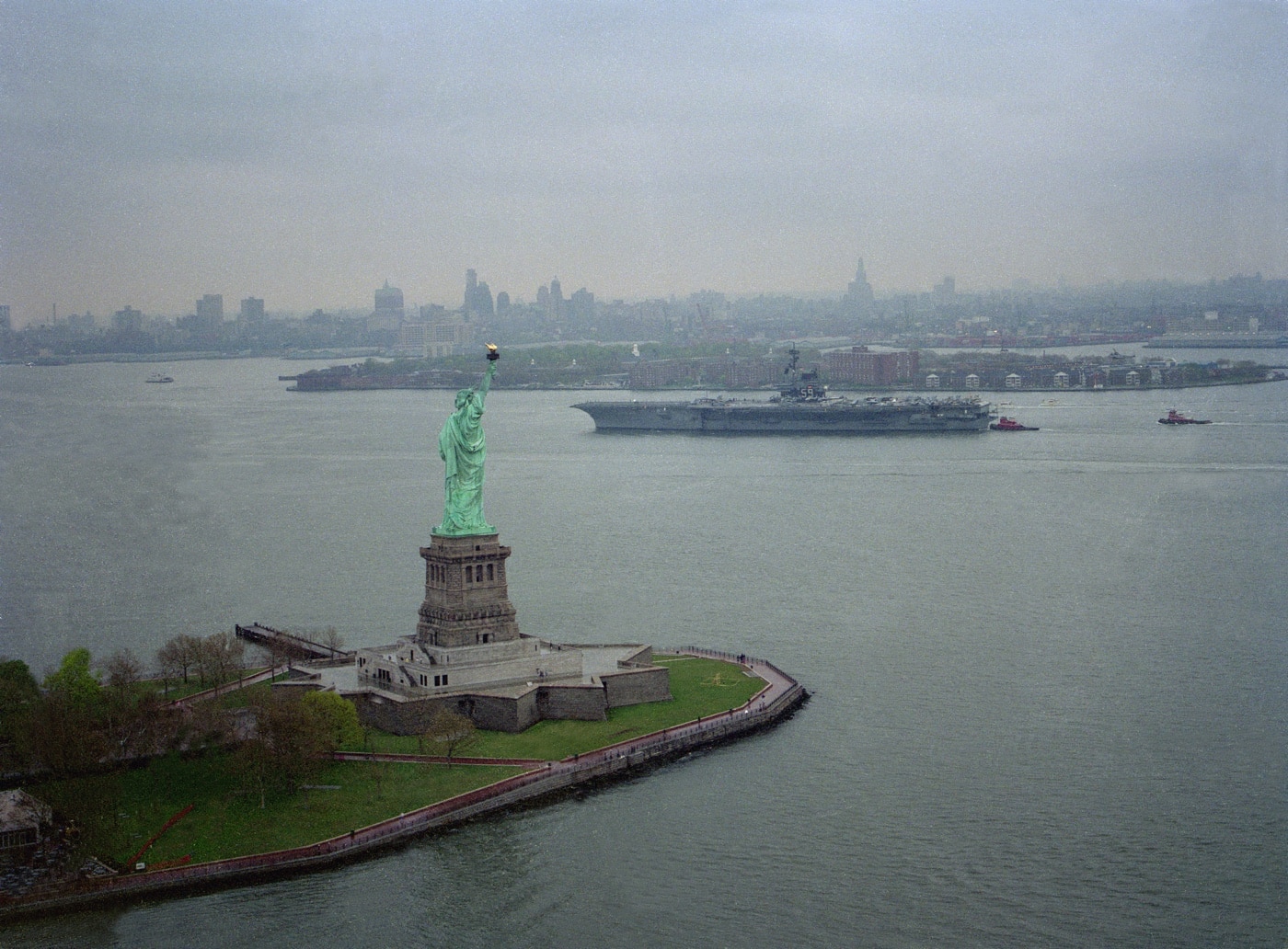
She then made a final voyage to Brownsville, Texas, in the spring of 2017. She arrived to a hero’s welcome and was subsequently broken up. Scrapping was completed in early 2019, officially marking the end of the United States Navy’s first class of massive flattops.
Editor’s Note: Please be sure to check out The Armory Life Forum, where you can comment about our daily articles, as well as just talk guns and gear. Click the “Go To Forum Thread” link below to jump in and discuss this article and much more!
Join the Discussion
Continue Reading
Did you enjoy this article?

 118
118






